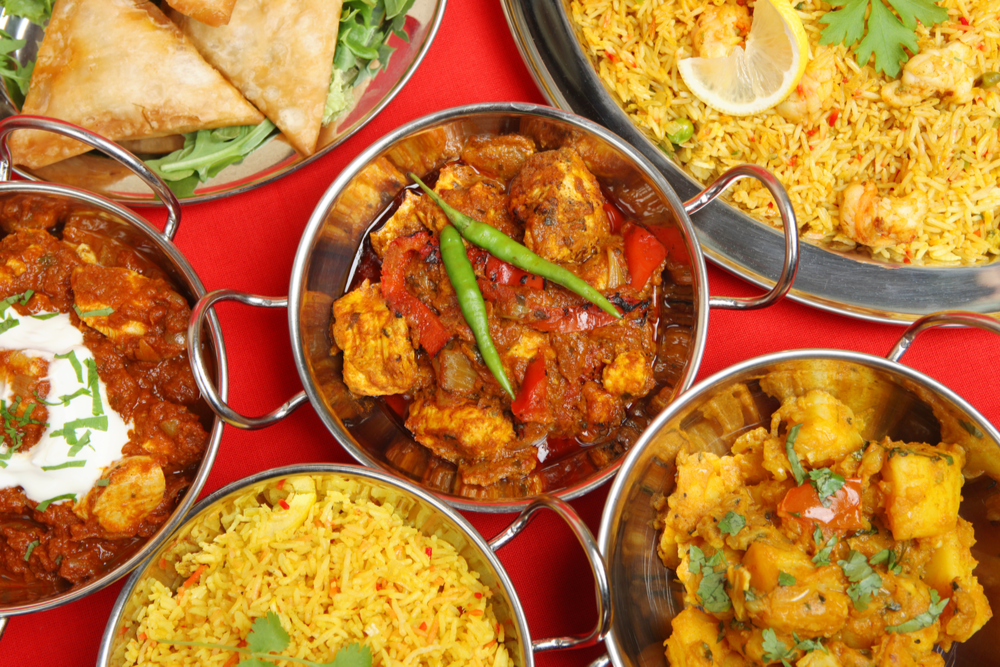A Short Guide to Ordering a Meal at an Indian Restaurant
It can be intimidating to go to any restaurant, check the menu and have it look like Russian roulette as you try to choose your meal for the night from the foreign names. Most people look at an Indian restaurant menu and try to search for names that might sound familiar or popular, such as the Chicken Tikka Masala or Tandoori Chicken.
These dishes are well-known for a good reason, but you might be closing yourself off from a variety of other flavors by choosing those every time. Try other dishes if you have the opportunity to because having Indian food is just such a distinct experience thanks to its different tastes,
Here’s a short guide to Indian food so that you know what to order off the menu next time.
Appetizers
Before you even think about the main course, you should get some appetizers from the menu. Indian street food usually makes up the selection for appetizers, so you’re in for quite the treat.
Most appetizers are very crisp and fried to perfection, which is a good contrast compared to most dishes that have really thick and spicy sauces. One of the most popular appetizers is Samosas, which is fried dough with spicy potato or meat as the filling.
Another alternative that also involves potatoes is Vada Pav. The potatoes are flattened and fried like dumplings, often placed in bread with some dry garlic chutney or cilantro chutney.
You can also opt for Bhajji or Pakoras if you feel like the former dishes mentioned might be a little too heavy for starters. Bhajji is fried chickpea batter that’s spiced up with more chutney.
Flatbread
There probably won’t be any garlic bread or crostinis at the restaurant. India is known for their flatbreads, which vary in the cooking method. The pictures on the menu may not help you distinguish which ones, but knowing the names might help.
Naan is usually a frontrunner when it comes to the accompaniment for the entrée. This soft, yet perfectly charred flatbread is made with wheat flour, and the dough is added with some yogurt. It can be mesmerizing to watch these being cooked in a tandoor, which is basically an open Indian oven.
Rotis are made with whole wheat flour and can prove to be much softer than Naan. Instead of using a tandoor, Roti is made with an Indian skillet called tava on a regular stove.
If you’re craving something flavorful, request a Stuffed Paratha instead. This flatbread has different sorts of filling rolled and incorporated into the flatbread itself.
Entrée
Finally, the main course. Indian meals are pretty rich in their taste, and spices aren’t skimped on at all. You can always ask the waiter for recommendations, but here are some dishes you may want to try when you come to an Indian restaurant:
Biryani - This Indian dish comprises really spiced-up rice and some meat. Most of the common meats that go with this hot rice dish are slow-cooked chicken or goat meat.
Vindaloo - This curry dish is a cross between Portuguese and Indian food, as meat is marinated in wine, vinegar and garlic before being sauced up.
Rogan Josh - Braised lamb, goat or chicken is braised with gravy made from garlic cloves, ginger, bay leaves, onions, yogurt and more.
Saag Paneer - Vegetarians may enjoy this curry that has a mixture of spinach and other leafy goods. If you read Palak Paneer, expect spinach to be the main green, accompanied by paneer, a rich and savory Indian cheese.
Chana Masala - Another alternative for some meat-centered dishes like Tikka Masala, Chana Masala is a curry that contains chickpeas, onions, ginger and garlic.
Conclusion
Indian food is unique in its taste compared to other sorts of cuisines. It can be rewarding when you get out of your comfort zone and choose to be adventurous with your orders. You might get something you’ll like and order next time you dine in again.
Looking for the best Indian restaurant in Vancouver? Karakoram Restaurant can provide you with some of the most exquisite flavors with a menu composed of Western, Middle Eastern, Pakistani and Indian cuisines. Contact us today!

